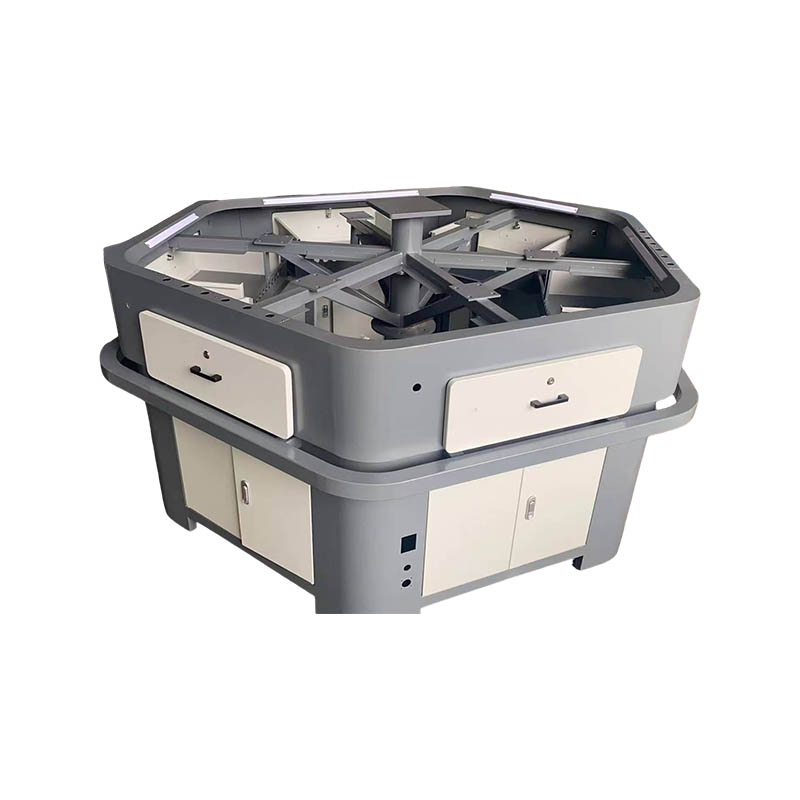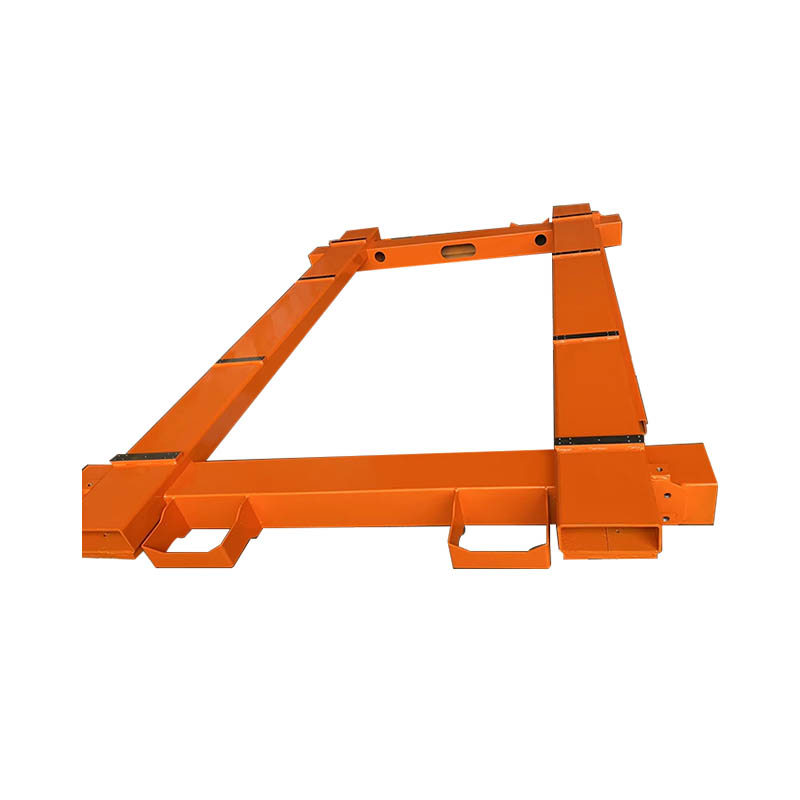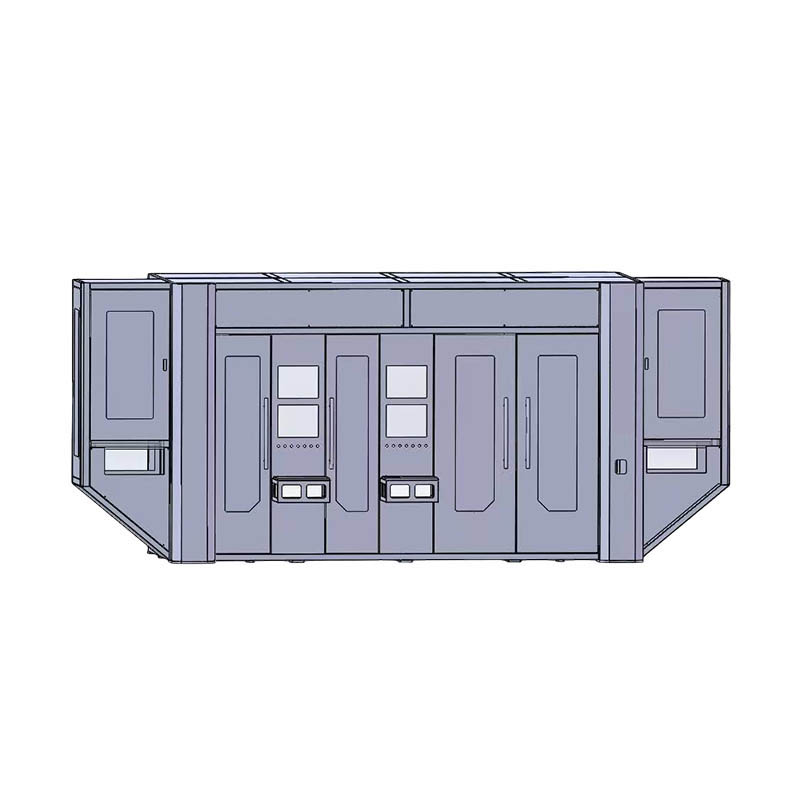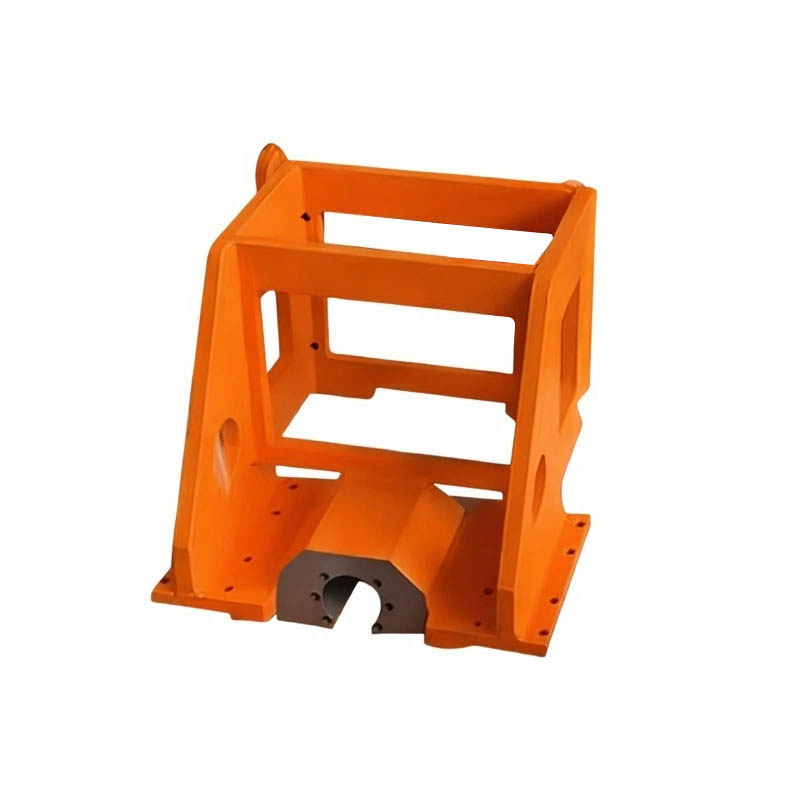What special designs are used to improve vibration resistance in internal metal welding parts of automotive automation equipment?
Release Time : 2025-09-19
In modern automotive manufacturing, automated equipment such as welding robots, assembly lines, conveyor systems, and inspection platforms are widely used in the four major process stages of stamping, welding, painting, and final assembly. These devices operate under high-frequency, high-intensity, and continuous conditions, inevitably subjecting them to a variety of dynamic loads, such as motor operation, mechanical shock, and conveyor belt vibration. As the backbone and core load-bearing components of the equipment, the structural stability of internal metal welded parts is directly related to the overall operating accuracy, service life, and production safety. Therefore, their vibration resistance becomes a key consideration in the design. Through a series of special designs, internal metal welding parts of automotive automation equipment can maintain structural integrity and functional stability in complex vibration environments.
1. Optimizing Structural Rigidity and Suppressing Resonance Effects
Vibration damage in internal metal welding parts of automotive automation equipment often stems from insufficient structural rigidity or resonance caused by natural frequencies close to the excitation frequency. To this end, metal welded parts in automotive automation equipment generally adopt high-rigidity designs, such as using rectangular tubes, H-beams, or thick plates welded into a closed frame structure to enhance overall bending and torsional resistance. Finite element analysis (FEA) modal simulation is also used to accurately calculate the natural frequency of welds. Structural dimensions can then be adjusted or ribs added to avoid the main vibration frequency ranges during equipment operation, effectively preventing fatigue cracking or deformation caused by resonance.
2. Rational Layout of Ribs and Support Structures
Designers will add horizontal, longitudinal, or diagonal ribs to critical stress-bearing areas of welds, such as equipment bases, column connections, and mounting surfaces for moving components. These ribs not only disperse vibration stress but also create "force flow" channels, evenly transmitting vibration energy throughout the structure and avoiding localized stress concentrations. For example, in robot base welds, the use of a cross-grid ribbed plate structure significantly improves resistance to high-frequency vibration, ensuring positioning accuracy even during high-speed robot movement.
3. High-strength Welding Processes Ensure Joint Reliability
Under vibrating conditions, welds are most susceptible to fatigue cracking. Therefore, welds in automotive automation equipment typically utilize high-energy-density processes such as MIG/MAG, TIG, or laser welding to ensure sufficient weld penetration, uniform weld formation, and minimal internal defects. At the same time, the weld path is optimized to avoid right-angle turns and adopt smooth transitions to reduce stress concentration. Key areas also undergo post-weld heat treatment or vibration aging treatment to eliminate residual stress and improve weld fatigue resistance.
4. Modular and Symmetrical Structural Design to Improve Dynamic Balance
Modern automation equipment often adopts a modular design. Welded components, serving as the supporting platform for functional modules, are often arranged symmetrically. This design not only facilitates assembly and maintenance but, more importantly, ensures balanced mass distribution during operation, reducing additional vibration caused by eccentricity or asymmetry. For example, the welded components of the conveyor line frame adopt a bilaterally symmetrical structure, ensuring uniform force on both sides of the rollers, ensuring smooth operation and reducing vibration sources.
5. Vibration-Isolating Connections and Elastic Support Design
In certain high-vibration areas, the connection method between welded components and other equipment components is also carefully considered. For example, flexible connections using rubber pads, vibration-damping bolts, or elastic supports create a "vibration isolation layer" to block vibration transmission paths. This design is particularly common in areas such as motor mounts and pneumatic component brackets. It protects the welded components themselves while minimizing the impact on precision sensors or control systems.
6. Material Selection and Lightweighting: Balancing Vibration Resistance
Internal metal welding parts of automotive automation equipment achieve lightweighting through rational cross-sectional design while ensuring load-bearing capacity. This reduces overall inertia and, consequently, vibration amplitude. Some high-end equipment also utilizes welded aluminum alloy structures, reducing weight while also utilizing its excellent damping properties to absorb some vibration energy.
Internal metal welding parts of automotive automation equipment achieve robust vibration resistance through a multi-faceted approach, including optimized rigidity, reinforced rib layout, high-strength welding, modular and symmetrical design, vibration-damping connections, and scientifically selected materials. These specialized designs not only ensure the structural safety of the equipment during long-term, high-load operation, but also guarantee the precision and efficiency of the automotive manufacturing process.
1. Optimizing Structural Rigidity and Suppressing Resonance Effects
Vibration damage in internal metal welding parts of automotive automation equipment often stems from insufficient structural rigidity or resonance caused by natural frequencies close to the excitation frequency. To this end, metal welded parts in automotive automation equipment generally adopt high-rigidity designs, such as using rectangular tubes, H-beams, or thick plates welded into a closed frame structure to enhance overall bending and torsional resistance. Finite element analysis (FEA) modal simulation is also used to accurately calculate the natural frequency of welds. Structural dimensions can then be adjusted or ribs added to avoid the main vibration frequency ranges during equipment operation, effectively preventing fatigue cracking or deformation caused by resonance.
2. Rational Layout of Ribs and Support Structures
Designers will add horizontal, longitudinal, or diagonal ribs to critical stress-bearing areas of welds, such as equipment bases, column connections, and mounting surfaces for moving components. These ribs not only disperse vibration stress but also create "force flow" channels, evenly transmitting vibration energy throughout the structure and avoiding localized stress concentrations. For example, in robot base welds, the use of a cross-grid ribbed plate structure significantly improves resistance to high-frequency vibration, ensuring positioning accuracy even during high-speed robot movement.
3. High-strength Welding Processes Ensure Joint Reliability
Under vibrating conditions, welds are most susceptible to fatigue cracking. Therefore, welds in automotive automation equipment typically utilize high-energy-density processes such as MIG/MAG, TIG, or laser welding to ensure sufficient weld penetration, uniform weld formation, and minimal internal defects. At the same time, the weld path is optimized to avoid right-angle turns and adopt smooth transitions to reduce stress concentration. Key areas also undergo post-weld heat treatment or vibration aging treatment to eliminate residual stress and improve weld fatigue resistance.
4. Modular and Symmetrical Structural Design to Improve Dynamic Balance
Modern automation equipment often adopts a modular design. Welded components, serving as the supporting platform for functional modules, are often arranged symmetrically. This design not only facilitates assembly and maintenance but, more importantly, ensures balanced mass distribution during operation, reducing additional vibration caused by eccentricity or asymmetry. For example, the welded components of the conveyor line frame adopt a bilaterally symmetrical structure, ensuring uniform force on both sides of the rollers, ensuring smooth operation and reducing vibration sources.
5. Vibration-Isolating Connections and Elastic Support Design
In certain high-vibration areas, the connection method between welded components and other equipment components is also carefully considered. For example, flexible connections using rubber pads, vibration-damping bolts, or elastic supports create a "vibration isolation layer" to block vibration transmission paths. This design is particularly common in areas such as motor mounts and pneumatic component brackets. It protects the welded components themselves while minimizing the impact on precision sensors or control systems.
6. Material Selection and Lightweighting: Balancing Vibration Resistance
Internal metal welding parts of automotive automation equipment achieve lightweighting through rational cross-sectional design while ensuring load-bearing capacity. This reduces overall inertia and, consequently, vibration amplitude. Some high-end equipment also utilizes welded aluminum alloy structures, reducing weight while also utilizing its excellent damping properties to absorb some vibration energy.
Internal metal welding parts of automotive automation equipment achieve robust vibration resistance through a multi-faceted approach, including optimized rigidity, reinforced rib layout, high-strength welding, modular and symmetrical design, vibration-damping connections, and scientifically selected materials. These specialized designs not only ensure the structural safety of the equipment during long-term, high-load operation, but also guarantee the precision and efficiency of the automotive manufacturing process.







